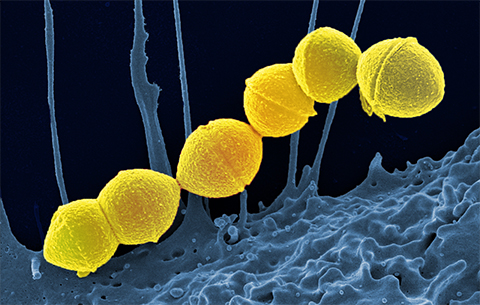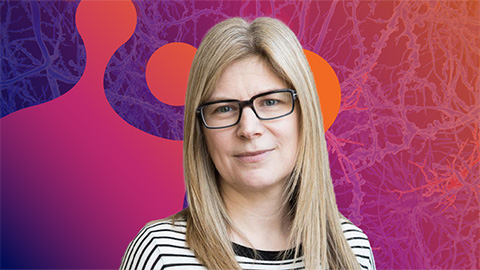Quantifying how proteins in microbe and host interact
Antimicrobial resistance is a growing problem around the world. When microbes such as bacteria, viruses, parasites and fungi stop responding to antimicrobial medicines, most researchers respond by working to develop new vaccines. However, when host proteins bind to bacterial proteins, that binding masks some dominant antigenic sites on the pathogen. Because of this, traditional vaccines have seen poor antibody responses.
In a recent study published in the journal Molecular & Cellular Proteomics, researchers at Lund University used affinity purification combined with quantitative mass spectrometry, or AP-MS, techniques to investigate if these bacteria and host protein–protein interaction networks could compromise the development of protective antibody responses; they used Streptococcus pyogenes, a bacteria that causes infections in humans,as a model system.

Johan Malmström was the corresponding author of this study. “To develop better vaccines, we need new methods and a better understanding of the antibody responses that develop in immune individuals,” he said.
Streptococcus pyogenesbelongs to Group A Streptococcus, or GAS, which affects about 18 million people annually, and claims over 500,000 lives, so an urgent need exists for a vaccine against GAS.
In previous work, Malmström’s lab has shown that GAS forms extensive protein interaction networks with human proteins, so they wanted to analyze the association between the antigen-specific antibody responses and the host protein–bacterial protein interactions. They also wanted to understand if antigen-specific antibody responses could affect these protein networks to understand antibody repertoire (the entire set of antibodies produced in an individual), ultimately aiding the development of effective vaccines against GAS.
In this study, the researchers immunized mice with the conserved M1 protein from GAS and showed that mouse plasma protein forms similar protein networks with the bacterial M1 protein as those seen in humans. Using AP-MS, they quantified the competition among antibodies and protein interaction networks.
While the team found that the antigen targeted by the anti-M1 antibodies affected sites outside the protein interaction surfaces and could not outcompete these interactions, they also discovered in this study that regions in bacterial proteins within protein-interaction interfaces are more challenging to develop antibodies against, highlighting the need to quantify and assess these interactions.
Several bacterial pathogens use their surface proteins to interact with the host proteins to dodge the immune system and mask their dominant epitopes.
The experimental strategy developed in this study can measure the level of competition between antibodies and host plasma proteins at the same bacterial sites, thereby dictating the course of host immune responses. This method could be broadly applicable to any type of bacterial protein.
“I think that the most efficient way forward would be to build networks of scientists with different research skills and meet around the same problem,” Malmström said.
Read more about this group’s research here.
Enjoy reading ASBMB Today?
Become a member to receive the print edition four times a year and the digital edition monthly.
Learn moreGet the latest from ASBMB Today
Enter your email address, and we’ll send you a weekly email with recent articles, interviews and more.
Latest in Science
Science highlights or most popular articles

Mapping fentanyl’s cellular footprint
Using a new imaging method, researchers at State University of New York at Buffalo traced fentanyl’s effects inside brain immune cells, revealing how the drug alters lipid droplets, pointing to new paths for addiction diagnostics.

Designing life’s building blocks with AI
Tanja Kortemme, a professor at the University of California, San Francisco, will discuss her research using computational biology to engineer proteins at the 2026 ASBMB Annual Meeting.

Cholesterol as a novel biomarker for Fragile X syndrome
Researchers in Quebec identified lower levels of a brain cholesterol metabolite, 24-hydroxycholesterol, in patients with fragile X syndrome, a finding that could provide a simple blood-based biomarker for understanding and managing the condition.

How lipid metabolism shapes sperm development
Researchers at Hokkaido University identify the enzyme behind a key lipid in sperm development. The findings reveal how seminolipids shape sperm formation and may inform future diagnostics and treatments for male infertility.

Mass spec method captures proteins in native membranes
Yale scientists developed a mass spec protocol that keeps proteins in their native environment, detects intact protein complexes and tracks drug binding, offering a clearer view of membrane biology.

Laser-assisted cryoEM method preserves protein structure
University of Wisconsin–Madison researchers devised a method that prevents protein compaction during cryoEM prep, restoring natural structure for mass spec studies. The approach could expand high-resolution imaging to more complex protein systems.

